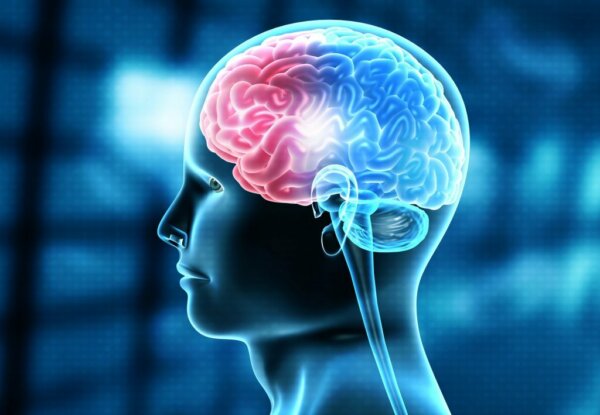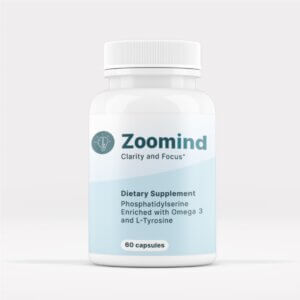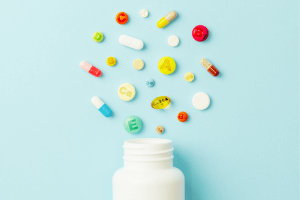Because Attention Deficit/Hyperactivity Disorder (ADHD) is displayed mostly in a range of difficult behaviors, it’s understandable when doctors and pharmacists are asked this question that they cannot give a single comprehensive answer.
It’s well known that there is no “cure” for ADHD, and furthermore that the most frequently prescribed medications come with limitations and side effects that make them less than perfect in all circumstances.

Let us take a minute to explain what ADHD does, in terms of both observed symptoms and the likely underlying causes. Then we can try to describe some of the ways you can improve your child’s life either with an alternative treatment to traditionally prescribed drugs, or to supplement their workings.
How Does Someone with ADHD Behave?
It is easy to misunderstand or misinterpret many of the characteristic behaviors displayed by someone with ADHD. A few of the typicals misunderstandings are:
- People with ADHD are not lazy. Having the attention deficit element (AD) means they are easily distracted and quickly lose concentration. They lose things; they tend to give up on boring or time-consuming tasks, do not seem to carry out instructions by constantly shifting attention between tasks, and they struggle to prioritize responsibilities. But they are not lazy – in fact often they are the opposite, and have to work much harder than others just to keep pace.
- People with ADHD aren’t being selfish or egotistical. Hyperactivity means they cannot wait patiently. They seem to act irresponsibly and interrupt and stop group conversations. But analysis of such behavior often shows that it is completely spontaneous and does not in any way reflect a personality trait.
- People with ADHD are no less intelligent. In fact the opposite may be true. There are some kinds of intelligence tests where people with ADHD score higher than average, when the test rates things like creativity. They excel in areas like drama, music, visual arts, and scientific discovery. Many studies of strong entrepreneurial innovators have found that they had, and some still have, elements of ADHD.
- ADHD is not a result of bad parenting. There is no evidence at all to support such an opinion, and the opposite is in fact true. Parents of children with ADHD have a hard job to do and rarely get the credit for the great amount of work they are doing. It is proven that ADHD can be tied to specific neurophysiological and structural differences in the brains of people who have the disorder. The only reason people may think that parents are to blame is because siblings may have inherited the genes that cause ADHD from their common parents, and that gives the appearance that the home environment somehow causes the problem.
- Adults claiming they have ADHD are simply trying to get high. Unfortunately, this may be true, but not for any selfish reason. The most common medications prescribed during childhood are stimulants that do create a sense of euphoria. The body builds up levels of tolerance, which means that if the disorder persists into adulthood (which it does in more than half of all cases) the person needs increasing levels of medication to achieve the required dosages of the necessary chemicals. To that extent, they are “hooked” on the meds, and may be craving them just to feel well.
What Causes ADHD?
The consensus amongst scientists currently is that while ADHD has many contributory factors, the main and most prominent causes are physical rather than psychological. This in turn is indicating that some fundamental characteristics in the body are causing the disorder, although this may be the result of a wide range of completely independent factors. Amongst others, some of the established contributors to development of ADHD are:
- Genetics – there is a fairly strong degree of inheritability. Scientists now believe that at least three-quarters of ADHD cases are attributable to the genes. If one member in a family has ADHD then there is a 25%–35% probability that another family member also has it. By comparison, the general probability in the wider community is less than 10%.
- Conditions in the womb – studies have found correlation between fetal development, infant brain size, and an occurrence of ADHD. This may be attributable to many things, including stressful pregnancies, toxins in mother’s diet, or alcohol intake or smoking while pregnant
- Premature birth – which may result in under-developed brains
- Difficult births – which may require extended time in labor, resulting in hypoxia
- Head injuries while a child is young
- Biochemistry differences
One or more of these in combination may be the root cause of ADHD. On the other hand, there are many instances of people developing ADHD when none of the above are involved. The basic facts are that ADHD is not directly attributable to a single root cause.
What Could be Going Wrong in a Person with ADHD?
Proper brain functioning relies on the passage of electrical signals down nerves (neurotransmission). Those signals use chemicals to “jump” over synapses (the point at which they meet other nerves) in order to continue along the required pathway. In a human brain, there are innumerable synapses, and the chemistry has to be optimal at each point in order for normal brain function to proceed. One of the essential chemicals in this process is dopamine.
There is strong evidence that some misfiring at nerve synapses may be a central issue for people with ADHD. In many such cases, restoring dopamine levels with medication or dietary supplements can be one of the most effective treatments for ADHD.

How Can you Reduce the Symptoms of a Child with ADHD without Resorting to Medications?
This is indeed one of the most important questions for parents and teachers and also for physicians and therapists. Given the limitations of all current medications, it is important to have another line of defense in order to minimize the disruptions caused by the disorder. In the long run, the effects of not treating ADHD can be serious and long-lasting, so reducing the reliance on a single treatment is important.
There are many things you could do.
In the first place, you can adjust your own behaviors, as well as the behaviors of those interacting with the child, in order to better handle the symptoms. Understand that people with ADHD tend to think much more in a “now or never” mode.
- You need to adjust your own thinking in the same way, so that they perceive you are listening and speaking in a more mindful, present way as an active participant.
- You need to be listening with the clear intention to understand, not always to quickly respond
- Pay attention to their mood and tone
- Be patient and be especially mindful of social cues and body language
- Most importantly, don’t interrupt!
When it’s your turn to talk:
- Affirm what you heard, and if possible give positive feedback – say something like “What I think I heard you say is . . . .”
- Be ready to say you don’t understand and ask for clarification – say something like “I don’t think I understand. Maybe you could write that down for me, please?”
- Be prepared to let them participate (maybe say something like “Can you repeat to me what you just heard, please?”)
- Be mindful of the timing of conversation
- Watch for unconscious messaging like trying to speak, eye movement, fiddling or squirming, etc.
- Stick to your point and don’t wander
- Allow for pauses before continuing.
Next, you can make changes to the environment where the child is interacting with others. Typically, this can include engaging in recreational programs at external venues. Introduce the child into programs offering crafts, sports and traditional hobbies to keep an environment with positive feedback.

There are many kinds of professional behavioral interventions that may involve day-long programs for several weeks at a time. Such programs typically include one-on-one training in socializing, and coached group play. As well as learning social skills, your child will also learn ancillary sports and team participation skills.
It’s important to get started as soon as there is a clear diagnosis of ADHD. Early intervention in preschool years gives a head start before any gap develops between your child and their peers. Introduce your child to early literacy and numeracy activities to give them a head start.
It’s vital to identify the real reason for any problematic behavior and what to do about it, such as by teaching the child to communicate better verbally, setting clear boundaries on what is acceptable and following up when he or she fails to follow directions.
Do solid sleep regimes and outdoor play help?
Children with ADHD are more likely to experience shorter sleep time, and have problems falling and staying asleep. As a result children with ADHD wake up still feeling tired and groggy. As a result, their symptoms get worse, and that makes it even harder to focus during the day and get to sleep the next night.
Children with ADHD who are sticking to a consistent sleep schedule are more likely to show improvement in focus, energy, and attention. Having a healthy nighttime routine by setting a pattern of going to bed at roughly the same time each night can help your child fall asleep more easily and stay asleep for longer.
Studies on levels of impulsivity in children with ADHD show that time spent outside in open space improves focus and attention, and decreases impulsivity. Although the underlying reasons for these benefits aren’t understood, the benefits themselves are well known. So, make it a priority to spend time outdoors wherever you can.
Can You Help Your Child with Simple Non-medical Treatment?
Since we now know that ADHD has causes that are coming from physical conditions inside the body, it is becoming more acceptable to look for ways to reduce the degree of the disorder with simple changes in the body. Amongst others, these could include:
- Eat more whole foods, especially those rich in omega 3 fatty acids
- Avoid food which impacts on gut bacteria and the production of dopamine essential for healthy brain function
- Pay attention to any nutrient deficiencies, especially B vitamins, zinc, omega 3 fatty acids, and magnesium
- Detoxify where there is a suggestion that intake of metals was too high
- Increase antioxidants in the diet
There is a growing agreement that the levels of dopamine in the brain and intake of the right omega 3 fatty acids are closely connected. Nutritionists are saying that a good way to get the right kind and volume of omega 3 is to eat at least two full meals of cold-water fish such as salmon, tuna, sardines, etc. However, this can be either expensive or not readily available, so you could look to simple dietary supplements that supply the necessary mix of fatty acids, especially ones that are designed specifically to deliver omega-3-rich phosphatidylserine supplemented with eicosapentaenoic acid (EPA) which was found to be most beneficial in treating children with ADHD.








